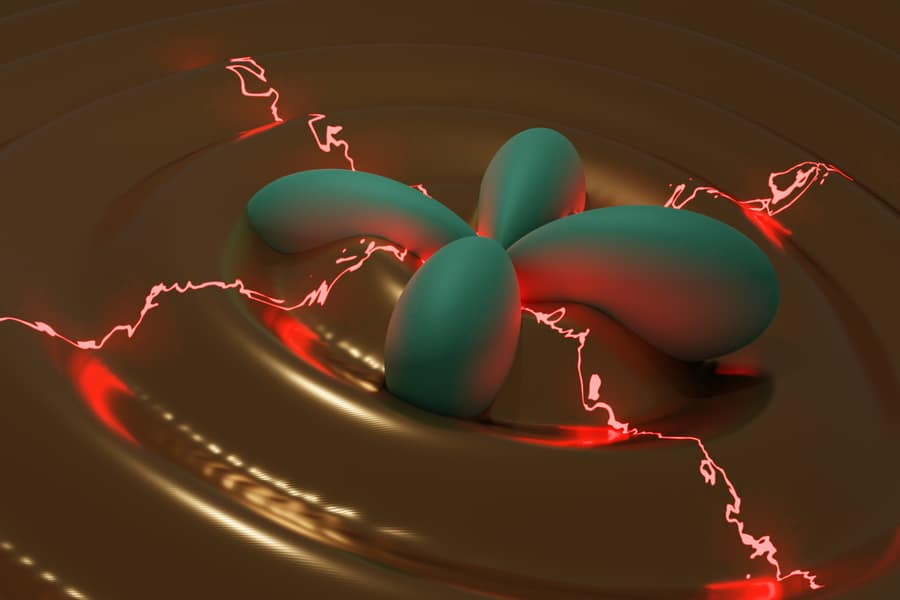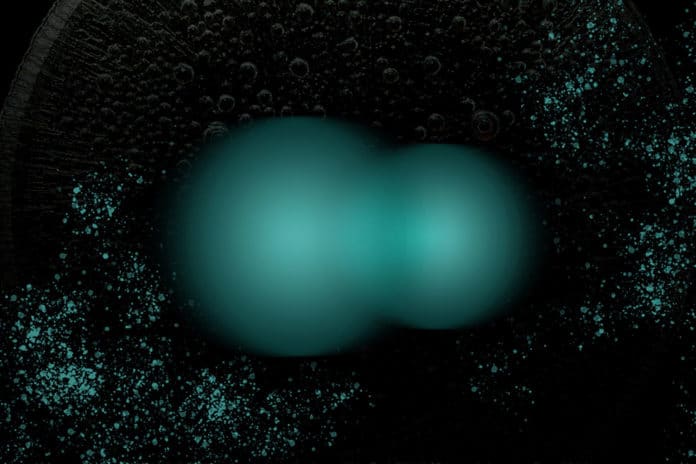MIT physicists have detected another kind of hybrid particle: a mashup of an electron and a phonon. This hybrid particle was detected in an unusual, two-dimensional magnetic material- nickel-phosphorus trisulfide (NiPS3).
Scientists dubbed the force between the electron and phonon as glue or bond. This force is 10 times stronger than any other electron-phonon hybrid known to date.
The exception bond of this hybrid particle suggests that the electron and phonon might be tuned in front of each other. Meanwhile, electron changes affect the phonon and vice versa. Such dual control could allow scientists to tune its electrical properties and its magnetism.
According to scientists, manipulating the properties of NiPS3 via the newly detected hybrid particles could one day be helpful as a new kind of magnetic semiconductor.
Nuh Gedik, professor of physics at MIT, said, “Imagine if we could stimulate an electron and have magnetism respond. Then you could make devices very different from how they work today.”
“Normally, the motion of electrons and other subatomic particles are too fast to image, even with the world’s fastest camera. The challenge is similar to taking a photo of a person running. The resulting image is blurry because the camera’s shutter, which lets in light to capture the image, is not fast enough, and the person is still running in the frame before the shutter can snap a clear picture.”

Physicists solved this problem by using an ultrafast laser. The laser emits light pulses lasting only 25 femtoseconds.
The laser pulse was split into two separate pulses and pointed at a sample of NiPS3.
Physicists set each pulse with a slight delay from each other. While the first stimulated or “kicked” the sample, the second captured the sample’s response, with a time resolution of 25 femtoseconds. In this way, they could create ultrafast “movies” from which the interactions of different particles within the material could be deduced.
More specifically, the team measured the precise amount of light reflected from the sample as a function of time between the two pulses. Changes occur in the reflection in the presence of hybrid particles. This happened when the sample was cooled below 150 kelvins when the material became antiferromagnetic.
Emre Ergeçen at MIT said, “We found this hybrid particle was only visible below a certain temperature when magnetism is turned on.”
The team then varies the frequency of the first laser. They did so to determine specific constituents of the particle. It was found that the hybrid particle becomes visible when the frequency of the reflected light is around a particular type of transition known to happen when an electron moves between two d-orbitals.
The team also observed the spacing of the periodic pattern visible within the reflected light spectrum. They found it matched the energy of a specific kind of phonon. This confirmed that the hybrid particle holds excitations of d-orbital electrons and this specific phonon.
Batyr Ilyas at MIT said, “One potential way of harnessing this hybrid particle is, it could allow you to couple to one of the components and indirectly tune the other. That way, you could change the properties of a material, like the magnetic state of the system.”
Journal Reference:
- Ergeçen, E., Ilyas, B., Mao, D. et al. Magnetically brightened dark electron-phonon bound states in a van der Waals antiferromagnet. Nat Commun 13, 98 (2022). DOI: 10.1038/s41467-021-27741-3
